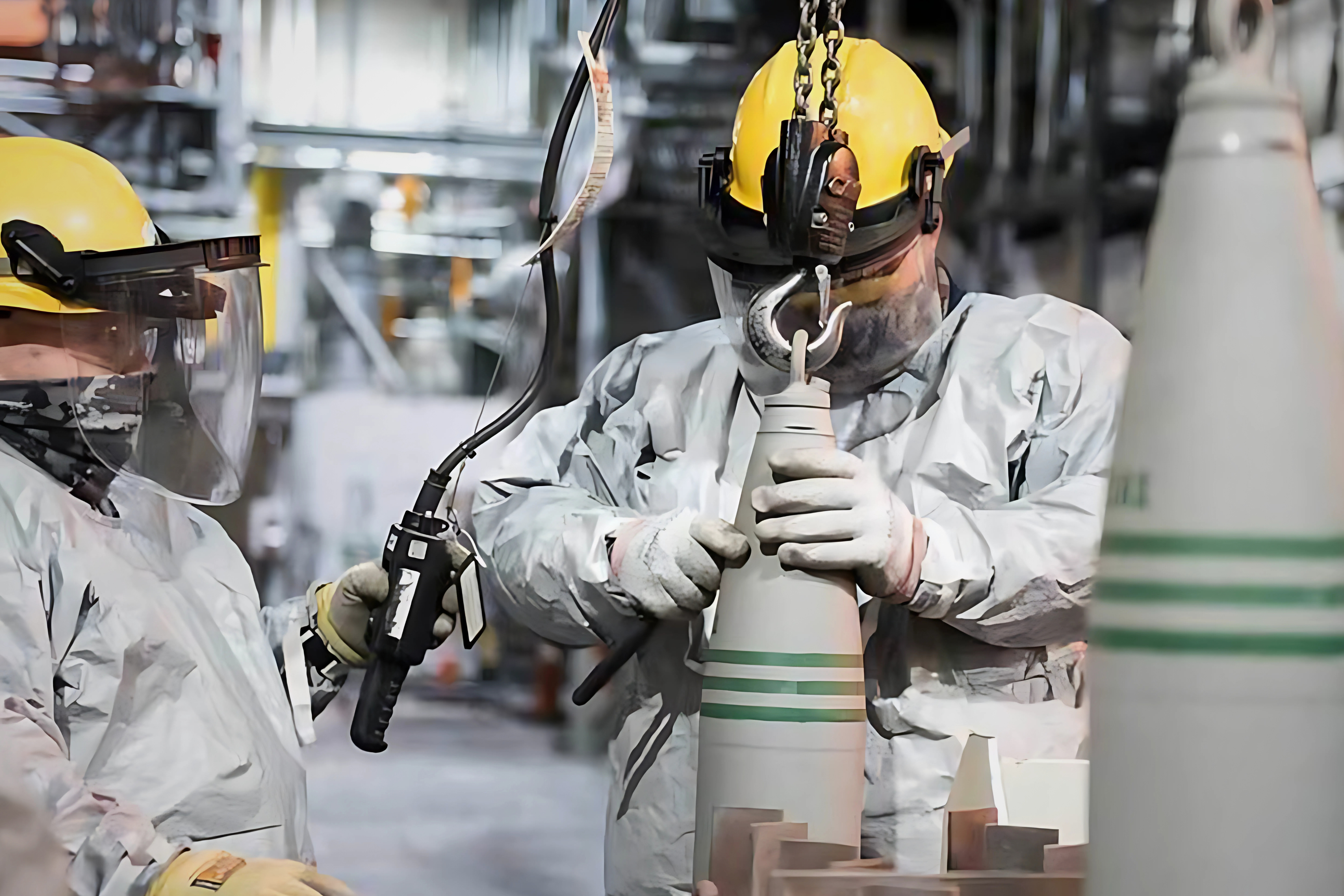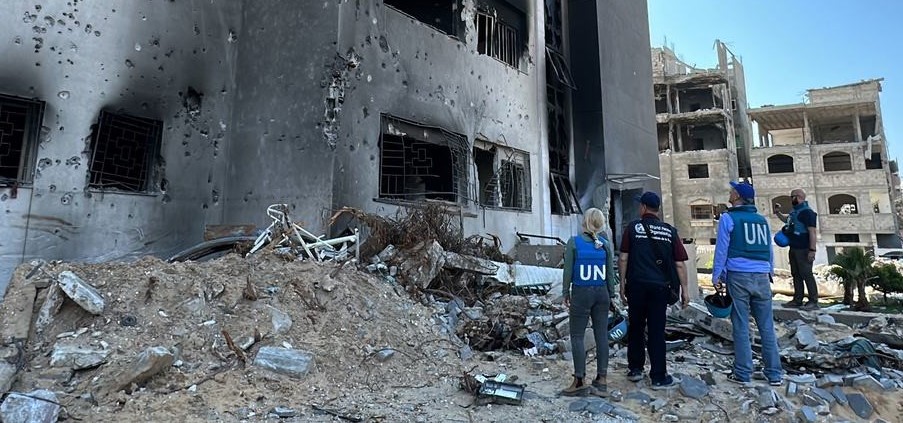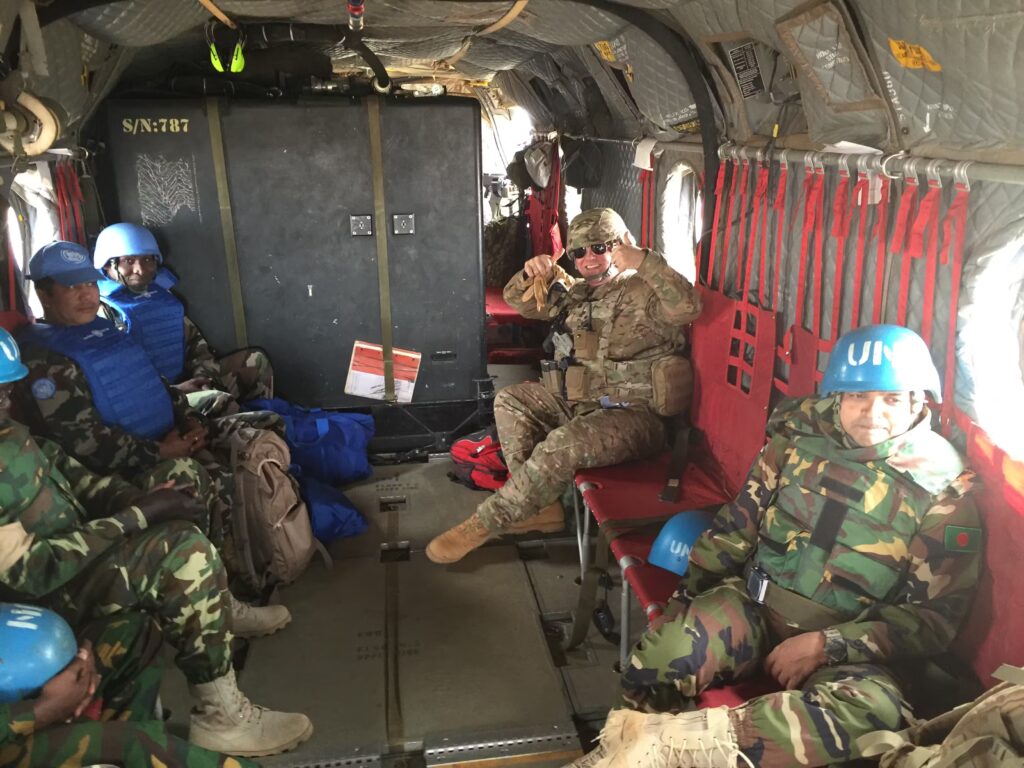From the mustard gas of World War I to precision Novichok attacks in Russia’s suppression of opposition, the creation of chemical weapons have long embodied humanity’s worst impulses. But they also represent something unexpectedly hopeful: one of the rare instances when the world has come together to say “never again” – and endeavored to bring that commitment to life.
That global consensus took form in the Chemical Weapons Convention (CWC), which entered into force 28 years ago this month. With 193 states parties, a Nobel Peace Prize and a verified destruction rate of 99% of declared chemical weapons stockpiles, the CWC stands as one of the most successful treaties in history.
“This is a treaty that has stood the test of time,” says James Revill, PhD, Head of WMD and Space Security Programs at the UN Institute for Disarmament Research (UNIDIR). “It’s comprehensively prohibited a class of weapons that are widely viewed as abhorrent – and it’s done so in a way that’s navigated incredibly difficult geopolitical moments.”
But progress, warns arms control expert Daryl Kimball, is fragile.
“We’ve achieved a lot – but we’re not done,” says Kimball, Executive Director of the Arms Control Association. “The taboo against chemical weapons possession and use established by the CWC is very strong, but we cannot take it for granted.”
“We’ve achieved a lot – but we’re not done. The taboo against chemical weapons possession and use established by the CWC is very strong, but we cannot take it for granted.”
Daryl Kimball, Executive Director of the Arms Control Association
From Partial Bans to Total Prohibition
The CWC emerged to close gaping holes left by the 1925 Geneva Protocol, which prohibited the use of chemical weapons but not their development or stockpiling. Those loopholes allowed chemical weapons to thrive in the shadows for decades.
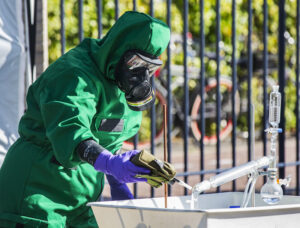
During World War II, chemical agents were produced en masse, though rarely deployed on the battlefield, mostly due to fear of retaliation. Civilians, however, weren’t spared. Nazi Germany used Zyklon B in the Holocaust, demonstrating how chemical weapons could become tools of genocide. More recently, Saddam Hussein used sarin and mustard gas against Iranian troops and Kurdish civilians during the Iran-Iraq War, culminating in the 1988 Halabja massacre, which killed an estimated 5,000 people.
“The world saw the horror and recognized that piecemeal bans weren’t enough,” Kimball says. “We needed a comprehensive, verifiable, enforceable treaty.”
The resulting CWC banned not only the use, but also the production, accumulation and transfer of chemical weapons. It created a watchdog – the Organisation for the Prohibition of Chemical Weapons (OPCW) – to verify compliance and oversee the destruction of stockpiles.
Since 1997, the OPCW has conducted over 5,000 inspections and overseen the destruction of more than 72,000 metric tons of chemical agents. That includes the final U.S. stockpile, eliminated in July 2023 at the Blue Grass Army Depot in Kentucky.
“The U.S. helped set the norm, and after years of hard work destroying our own chemical stockpiles, lived up to it,” says Kimball. “That’s leadership.”
Revill points to the treaty’s track record on adherence.
“Most countries are in compliance with the CWC,” he says. “Where there are deviations, some of which have been extremely challenging, the OPCW has tools – from technical assistance to firmer measures – to address noncompliance.”
“It’s a model,” Kimball adds. “It showed what global cooperation can achieve when guided by principles and U.S. leadership. We were key to its success.”
An Uncertain Future
While the CWC’s successes have been unmatched, “threats haven’t disappeared,” notes Revill. In the last decade, we’ve seen Syria’s use of chemical weapons, the poisoning of Russian dissident Alexei Navalny and the assassination of North Korean defector Kim Jong-nam. Experimentation and deployment of AI-designed toxins and dual-use chemicals are adding complexity to detection and enforcement.
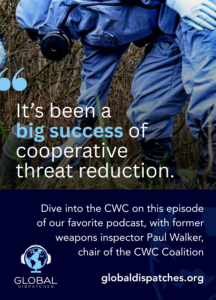 All of this is unfolding amid escalating geopolitical tensions, which further complicates efforts at prevention and accountability. Recent policy changes in Washington are straining U.S. ties to the very institutions and agreements that hold international security together – and they have arms controls experts on edge.
All of this is unfolding amid escalating geopolitical tensions, which further complicates efforts at prevention and accountability. Recent policy changes in Washington are straining U.S. ties to the very institutions and agreements that hold international security together – and they have arms controls experts on edge.
“Actions being taken right now,” Kimball warns, “will fundamentally reshape the U.S. role in every arms control regime that keeps the world from sliding into chaos. When the U.S. is engaged – when we fund, lead and show up – these agreements work. When we pull back, they unravel.”
“It sends a dangerous message that treaties are optional and accountability is negotiable,” Kimball says. “That’s how norms die.”
Wider Disarmament Under Pressure
Kimball also warns of broader implications for nuclear disarmament.
“The hard-won progress against nuclear weapons use, nuclear testing and nuclear proliferation is under stress,” he says.
He specifically calls out the New Strategic Arms Reduction Treaty (New START), the last remaining nuclear arms control agreement between the U.S. and Russia, which expires in February 2026. “If there’s not agreement to replace it,” Kimball says, “the U.S. and Russia could rapidly expand their deployed nuclear warheads, which are currently capped at about 1,550 each.”
He also warns of “the first three-way nuclear arms race in history,” citing China’s expanding arsenal. Meanwhile, Iran’s uranium enrichment and North Korea’s expanding program continue to pose global threats.
Looking Ahead
Still, Kimball and Revill believe in the power of the international system – especially when world powers stay fully engaged.
“We’ve come too far to let it all go,” Kimball says.
Revill offers an equally pointed reminder: “The reemergence of chemical weapons is not in the interest of any state. These are weapons with potentially catastrophic consequences. They should never be normalized.”
“The reemergence of chemical weapons is not in the interest of any state. These are weapons with potentially catastrophic consequences. They should never be normalized.”
James Revill, UN Institute for Disarmament Research (UNIDIR)
On this 28th anniversary of what’s been regarded as the world’s most successful treaty – in large part because of U.S. engagement – Kimball’s words ring true, “This is about our security, our values, our leadership.”
Daryl Kimball is Executive Director of the Arms Control Association and frequent contributor for the organization’s monthly journal, Arms Control Today. James Revill is the Head of the Weapons of Mass Destruction and Space Security Programmes at UNIDIR. His areas of expertise include biosecurity, bioterrorism and chemical warfare.
